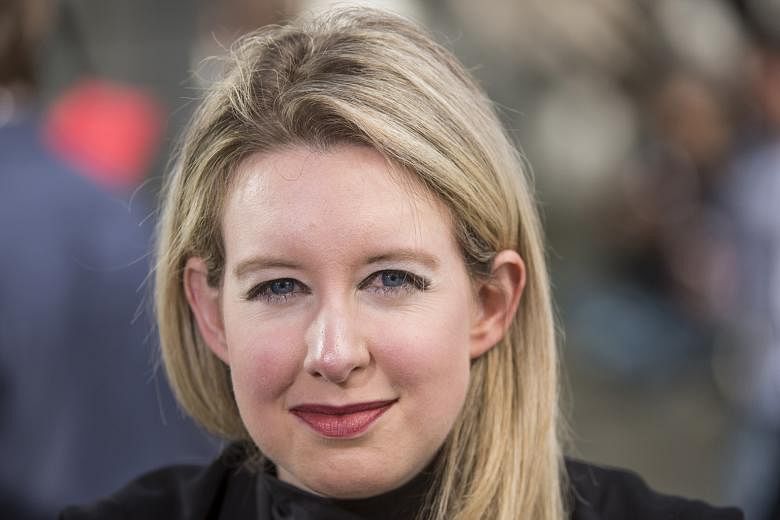Bad news has been piling on healthcare entrepreneur Elizabeth Holmes for several months and critics are baying for blood.
Two weeks after Forbes struck her off the billionaire's club by downgrading her personal fortune from US$4.5 billion (S$6.1 billion) to zero, retailer Walgreens has terminated its relationship with her medical testing company, Theranos, closing all 40 centres in its in-store pharmacies.
Ms Holmes, whose start-up was once valued at over US$9 billion, is fighting allegations that Theranos failed to meet quality-control measures in its blood-testing labs.
Investigations have also been instigated by the United States Securities and Exchange Commission, state health regulators and federal prosecutors.
The US federal health agency Centres for Medicare and Medicaid Services (CMS) has said it plans to revoke the company's lab licence over its failure to comply with safety and performance standards.
Ms Holmes, who risks being barred from the blood-testing business for two years, said in a TV interview in April: "I feel devastated that we did not catch and fix these issues faster."
It marks a dizzying fall from grace after she had achieved the distinction of being the world's youngest female self-made billionaire.
Ms Holmes had dropped out of Stanford University, where she was studying chemical engineering, at age 19 to pursue her start-up dream.
She worked for a time at the Genome Institute Lab in Singapore to help develop systems to detect the Sars virus, and later reportedly filed a patent for a technology in a wearable patch that could run multiple tests on patients using only a single drop of their blood.
This pinprick technology promised to disrupt the blood-testing industry, which is worth US$75 billion in the US, by making tests easier, less scary and more affordable.
Dr Channing Robertson, her chemical engineering professor, became Theranos' first board member.
As the seed company began to grow shoots, eager investors, including Oracle co-founder Larry Ellison, pumped nearly US$400 million into the start-up. Luminaries like Mr George Schultz and Dr Henry Kissinger were enlisted as directors, while Walgreens gave Theranos space in its shops.
So heady was her success that Inc. magazine featured her on its cover dressed in a black turtleneck sweater under the headline "The next Steve Jobs".
Soon after came The Wall Street Journal article casting aspersions on Theranos for exaggerating its lab-on-a-chip technology and running millions of blood tests before its device was ready for prime time.
"First they think you're crazy, then they fight you, and then all of a sudden you change the world," Ms Holmes had reacted.
But criticism has piled on. The US Food and Drug Administration said the firm lacked an adequate system for responding to complaints, while pharmaceutical giant GlaxoSmith- Kline refuted Theranos' claim that it did tests for the drugmaker.
Entrepreneur magazine even named her Worst Entrepreneur of 2015, and critics called for her to be barred from healthcare.
Theranos may still be worth about US$800 million, but with backers' equity ranking above Ms Holmes' stake, the Forbes downgrade has left her with nothing on paper.
And if all allegations are proven to be true, Theranos may never reagain the heights it once enjoyed.


